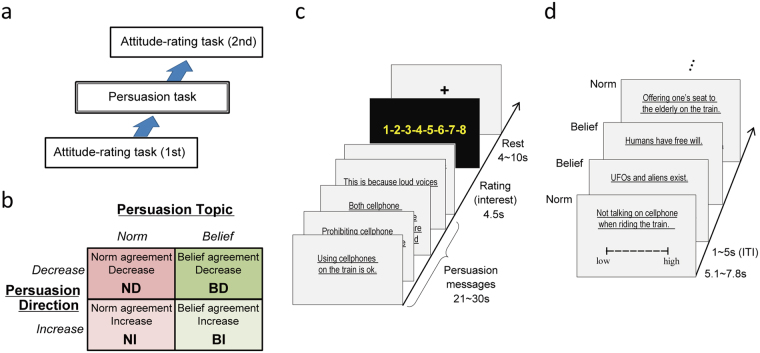Figure 1.
Experimental design. (a) Participants rated their attitudes for a wide variety of norms and beliefs that do not address any rules about social behaviors (beliefs) in the first attitude-rating task. They then completed a persuasion task in which messages were designed to change their attitudes about the two norms and two beliefs (the same for each subject and taken from the previous task). Finally, the attitude-rating task was repeated, and any changes in attitudes were revealed. (b) The persuasion task had a 2 × 2 factorial design of persuasion topic (norm or belief) × persuasion direction (increasing or decreasing agreement). (c) Block structure in the persuasion task. After viewing a persuasive message consisting of five sentences, participant’s rated how interesting they felt the messages were. Each subject completed 24 blocks (6 blocks × 4 conditions: ND, NI, BD, and BI). (d) An example sequence of trials in the attitude-rating task. Participants rated how much they agreed with the pseudorandomly presented norms and beliefs. The attitude-rating tasks used 50 norms and 50 beliefs, 4 of which (the same 2 norms and 2 beliefs) were included in the persuasion task.

